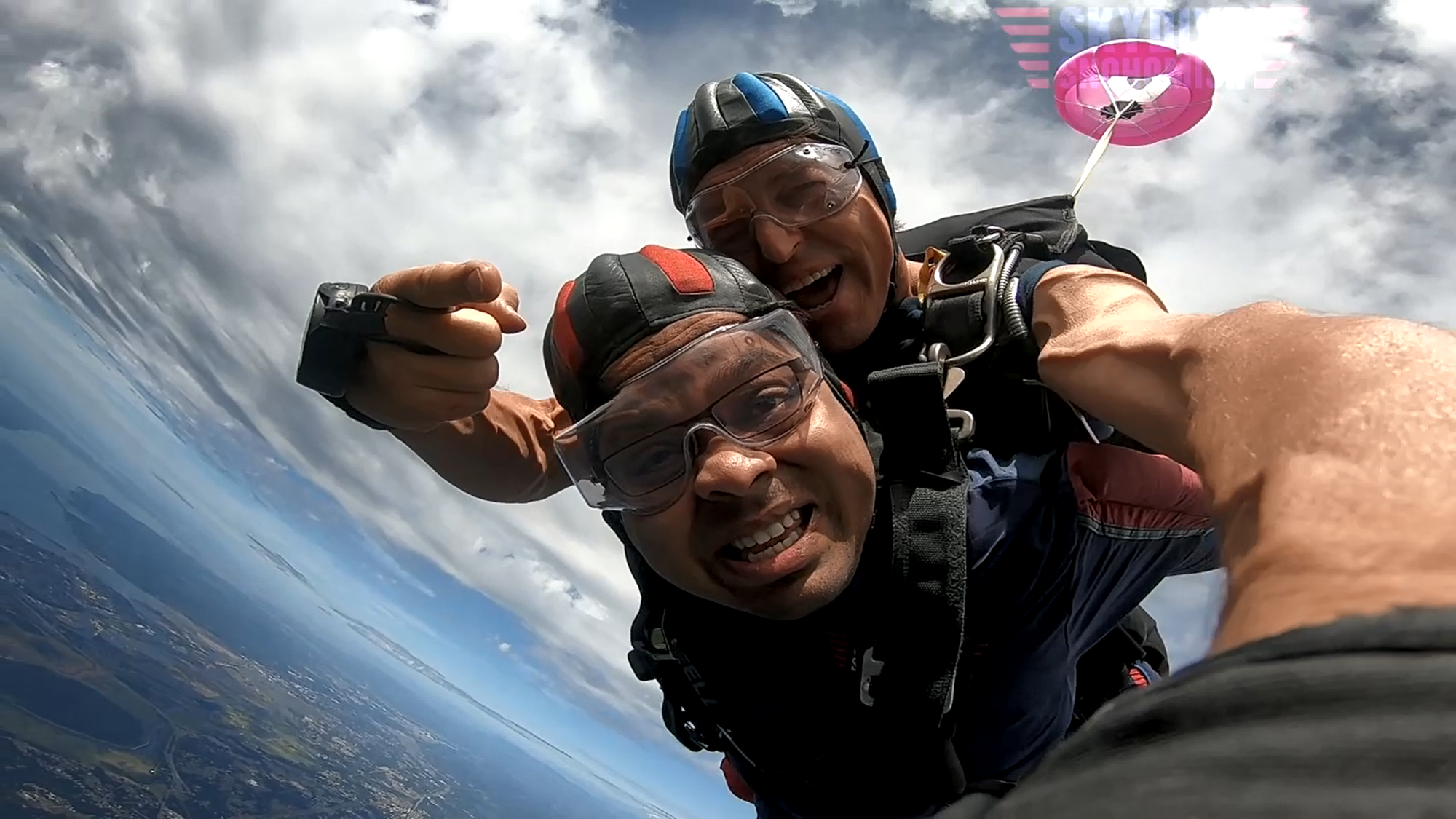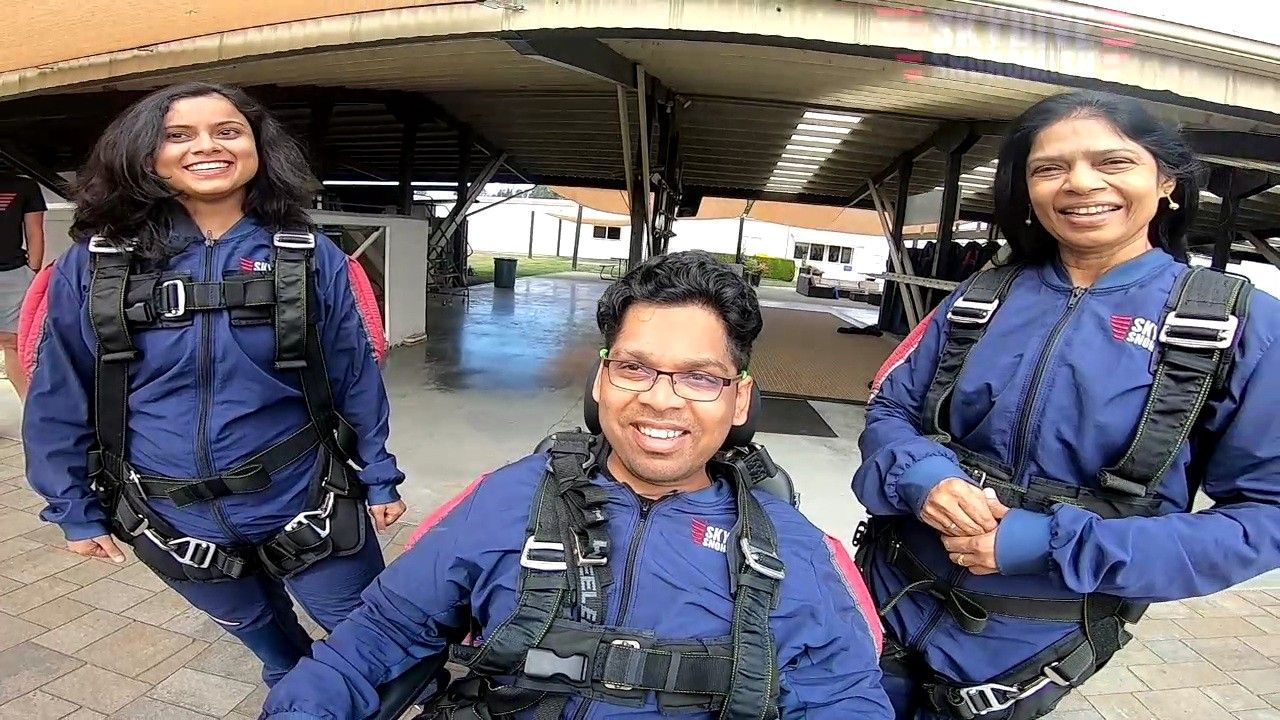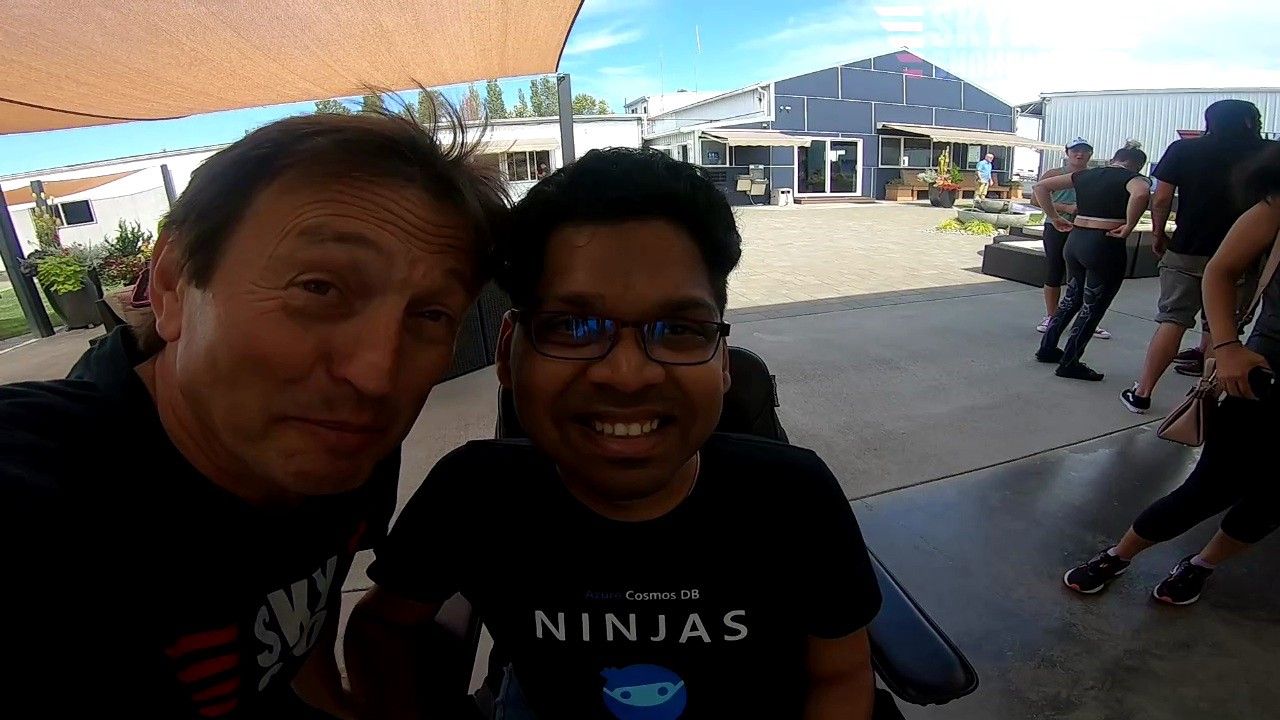Jumping off a plane
And surviving to tell the tale

It was a sunny day in high school when I first heard about skydiving. A friend showed me a few grainy photos on a 2009-era iPhone with a 3.5" screen. I was immediately fascinated. What the hell was this crazy madness?
skydiving | noun
the sport or activity of jumping from an aircraft and performing acrobatic maneuvers in the air during free fall before landing by parachute.
2011 saw the release of one of my favorite movies of all time: Zindagi Na Milegi Dobara. Among other things, a segment of the movie was on skydiving. Three friends do crazy adventure sports on a road trip and one of them was skydiving. It was exhilarating to just watch!
After seeing this, it became a bucket list item. I knew I wanted to do skydiving. I knew I wanted to experience that thrill. It had to happen.
But how?
That was the million-dollar question. Clearly, I couldn’t do it solo. I suffer from a rare genetic disorder called Spinal Muscular Atrophy that has me permanently confined to a wheelchair. I can’t even stand, much less do a running landing after jumping out of a plane at 10000+ ft.
Enter tandem skydiving. Tandem skydiving is basically the best invention ever known to mankind. You are strapped to an experienced skydiver, and you get the thrill for free.
Great. The conundrum was solved. The possibility of me jumping out of a plane seemed realistic. There was hope.
After I moved to Seattle for work, I decided that I needed to take the step. There was still some fear, but what fun is it without that fear? I had a friend who was interested as well, so I had some company. Since my mom stays with me in the summer and fall months (which is the only time Seattle weather permits skydiving), all 3 of us would do it. Yes, my mom too. I got my daredevil attitude from her, so you can say it runs in the family.
2017 passed. 2018 passed. Work has a tendency to keep you busy and make you forget about the things you want to do. Days pass slowly, but years pass before you know it.
2019 came around, and it had to be done this year. Let’s make it a new year resolution. Turned out to be a good move in hindsight because a bunch of proteins lumped together basically canceled 2020 and forced us to live like hermits.
Summer in 2019 was however, a disaster. It was one of those Seattle summers that happens every few years where the clouds decide not to take their summer vacation and decide to party with you. Although temperatures were still ok, we had rainy days and overcast days. Big no-no for skydiving.
Weather forecasts were analyzed. And we finally picked Thursday, August 29 because it was forecast to be one of the sunniest days that week. Tickets were booked, money was paid. The week rolls around and starts off bright and sunny. Yay.
Thursday turned out to be cloudy and overcast with the sun peeping through every now and then. Classic Seattle.
And oh, before you ask. Yes, I did plenty of research before even paying for the tickets. I asked my orthopedician who medically cleared me provided that necessary equipment was supplied. My physical therapist had the same opinion. I asked others in the disabled community and there were other people like me who have the same condition and did skydiving.
Yes, the risks were greater due to weaker bones and yada yada yada. But YOLO. Carpe diem. It was time to jump. 🪂

29th August. The day finally arrived. My mom and I made the trek to Skydive Snohomish. 3 buses and 2 hours later, we finally checked in.
The excitement was palpable.
I bought the package to increase our freefall from 30 seconds to 60 seconds. Might as well go all in, right?
There was tension. There was eagerness. There was scare. There was joy.
And there was going to be drama.
Lots of it. Why?
Read on.
In tandem skydiving, most of the work is done by your instructor. They jump out of the plane, monitor altitude, open the parachute, stick the landing, and so on. The only expectation on the individual is to hold your legs horizontally while landing.
Naturally, I couldn’t fulfill even that basic expectation. Hence, my legs had to be tied to the harness so that it is held horizontally for the entire duration. Simple enough. The center had used this same method in the past with other wheelchair users. Tried and tested. Besides, even a woman who was more than 100 years old did skydiving with them. This center had a proven track record, and I was ready to jump.

While I got dressed up, they showed me the strap to tie my legs. It looked simple enough. They put my legs in it and held it real tight. You can see it in the video at the end of this post. The rest of the preparation was identical. You wear a suit with multiple safety hooks to strap you to the instructor, while he is strapped in with the actual gear that matters.
The only issue was that my right leg felt a little awkward as if it may slip out. It wouldn’t but it felt that way. While we were in the plane going up, I asked for my leg to be adjusted. We were all sitting on the floor of the plane, and since my instructor was behind me and couldn’t reach ahead, the instructor next to us helped. It was a little better, but it still felt awkward.
Being first in line to jump, I was holding up other people with these adjustments. We didn’t want to delay them further and there was also a storm forecast in a few hours, so we had to keep track of the time. I thought it is only a little awkward, so it shouldn’t be too much of a problem. Let’s jump.
What a mistake.
We jumped and the free fall felt glorious. Exhilaration is an understatement for what I was feeling. The adrenaline was incredible. It is such a raw emotion. You also feel free. Very free. In hindsight, the 60 second free fall felt like therapy for the soul. Meditative. A state of Zen. Really hard to top it.
Then, the parachute opened.
I felt a sharp burst of pain in my back. I had no idea that the jerk of the main parachute opening would be so hard. Luckily, it died down in a couple of minutes, but it was a sudden jolt as I was hurtling towards the ground. My legs still felt fine, and we were ready to land.
The landing was fine — a smooth landing without any hiccups. I felt a huge sense of relief that I was safe and sound on land. And then, it started. My right knee felt funny. I couldn’t sit up straight on the ground. The guys on the ground were sure my legs were alright during landing. I didn’t know what happened, but the funny feeling soon became pain.
I lied down for a while, but it wouldn’t get better. The center wrapped an ice pack around my knee and gave me some Ibuprofen. My mom was worried. Neither of us knew what went wrong. It was much later that I analyzed that the slightly awkward positioning of my right leg made it incapable of taking the force. My left leg was perfectly placed and was therefore able to take the force.
My mom and I grabbed lunch at the only restaurant in that small municipal airport complex, and I booked a cab. There was no way I could spend 2 hours in 3 or 4 buses again to get home or to the hospital near my home. Now, the Pacific Northwest doesn’t have a reliable on-demand accessible taxi service. I called up a cabulance service and they could pick me up in 90 minutes. Great, something is better than nothing. We had lunch and waited. The pain seemed slightly better so that was a plus. At this point, I thought it was just a sprain and that I’ll be fine in a couple of weeks.
We had 2 hospitals near our apartment, so we checked into ER. They took me in for an X-ray and when they removed all the ice packs and moved my leg, the real pain surfaced. It was agony. I was in so much pain that they couldn't even take an X-ray in all the positions that they needed.
Once the X-ray results came in, it was clear. I had a fracture. A tibial plateau fracture. This was going to be a nightmare. After taking me to my room, they took me for a CT scan to assess the extent of damage. By this time, my pain was off the charts. I had to be given morphine via IV every 1–2 hours to keep me sane.
It was suggested a surgery may be necessary. However, after seeing my CT scan results and taking into account my weaker bones due to my disability, it was decided that natural healing was the better option. I am glad that they decided on that because fixing this with screws would lead to its own set of complications down the line that I am happy to avoid.
The next 2 months were very tough. I spent a week at the hospital and another 7–8 weeks recuperating at home. The brunt of all this fell on my mom and she had to single-handedly support me during this period. Taking care of me without a fracture was hard enough on her already. But now, everything was dialed up to 11. All credit to my mom who helped me get through tough times without a hitch. I had a great roommate who chipped in with whatever help he could, so that was great. We rented a hospital bed at home and that’s pretty much where I spent the next ~2 months.
It was Diwali (very end of October) by the time I could sit and bend my leg properly again. It was workable but still needed further healing. This recovery was soon followed by a bout of flu so that kept me home again. Very annoying. Even now, in the end of March, a full 7 months after the injury, my leg isn’t fully 100%. It is at like 95% maybe? That’s enough of a score to satisfy Asian parents. 😝
In the aftermath of my injury, a lot of people asked me if I regretted going skydiving.
The answer is a RESOUNDING NO!
Injuries are temporary. They heal. I am okay now.
But skydiving? It is a once-in-a-lifetime experience. It is something to cherish.
This was what I told my friends who were worried before I went skydiving:
If I die doing this, at least I died with a rush of adrenaline and went out with a bang!
Enjoy the video below of my skydiving experience!
Until next time. 🪂
